Les Ballets Africains (Dancers)
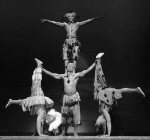
Les Ballets Africains, the national ensemble of the Republic of Guinea, has thrilled audiences worldwide since it was formed by the distinguished Guinean choreographer Keita Fodeba in 1952-53. The first performance was an instant success. After touring in France, Fodeba brought his company to Africa in 1955 and produced an extensive tour among the French Colonies of West Africa.
As a teacher, Fodeba pioneered a dance company that connected African culture to the rest of the world and introduced its legacy with style and elegance. Celebrating the company's half century, Les Ballets Africains performs traditional dance, music, acrobatics and storytelling. Pulsing rhythms from ancient tribal instruments build the excitement as the company bursts onto the stage in an explosion of dance and song. Fascination legends filled with humans, animals, and spirits unfold in a fast-paced joyous celebration that leave audiences breathless.
Ray Bolger (Dancer, Singer)
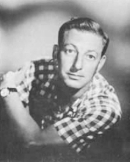
Raymond Wallace Bolger (January 10, 1904 - January 15, 1987)[2] was an American actor, dancer, singer, vaudevillian and stage performer (particularly musical theatre) who started in the silent-film era. He was a major Broadway performer in the 1930s and beyond.
Bolger's Broadway credits included "Life Begins at 8:40" (1934), "On Your Toes" (1936), "By Jupiter" (1942), "All American" (1962) and "Where's Charley?" (1948), for which he won the Tony Award for Best Performance by a Leading Actor in a Musical and in which he introduced "Once in Love with Amy," the song often connected with him. He repeated his stage role in the 1952 film version of the musical.
He is best known for his role as the Scarecrow and his Kansas counterpart farm worker "Hunk" in The Wizard of Oz (1939) and the villainous Barnaby in Walt Disney's holiday musical fantasy Babes in Toyland. He was also the host of The Ray Bolger Show on TV from 1953 and 1955, originally known as Where's Raymond?
Arlene Dahl (Actress, Beauty Consultant)
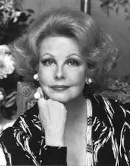
Arlene Carol Dahl is an American movie actress and former MGM contract star, who achieved notability during the 1950s. She was born in Minneapolis, Minnesota, the daughter of Idelle and Rudolph S. Dahl, a Ford motor dealer and executive. She is of Norwegian descent. After graduating from Washburn High School, she held various jobs, including performing in a local drama group and briefly working as a model for department stores.
Dahl was voted the Rheingold Beer Girl of 1946. She began her acting career in 1947. She reached the peak of her popularity and success in the 1950s. Some of her best films include: Reign of Terror, Three Little Words, Woman's World, Slightly Scarlet, and Journey to the Center of the Earth.
Dahl married actor Lex Barker in 1951. A year later she and Barker divorced, and Dahl would go on to marry another matinee idol, Fernando Lamas. In 1958 Dahl and Lamas had their only son, Lorenzo Lamas. Shortly after giving birth to Lorenzo, Dahl slowed and eventually ended her career as an actress, although she still appeared in movies and on television occasionally. Dahl would go on to work as a beauty columnist and as a writer.
In 1960, she married Texas oilman Christian Holmes and announced her retirement from acting. The marriage did not last, but Dahl increasingly diversified her work to become a lecturer and beauty consultant while she continued acting, but her focus by now was on business. After closing her company in 1967, she began serving as vice president at the ad agency Kenyon and Eckhardt that same year. In a 1969 interview, she said her old films were "such an embarrassment".
Source: walkoffame.com/arlene-dahl/
Source: en.wikipedia.org/wiki/Arlene_Dahl
Mike Douglas (Singer, TV Talk Show Host)
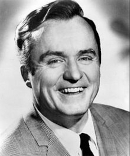
Mike Douglas was born as Michael Delaney Dowd Jr. (August 11, 1920 - August 11, 2006) was an American "Big Band" era singer, entertainer, television talk show host of The Mike Douglas Show, and actor.
By his teens, Dowd was working as a singer at nightclubs and on a Lake Michigan dinner cruise ship. After a stint in the Navy, he moved to Los Angeles, California. He was on the Ginny Simms radio show. After that, Douglas joined the big band of Kay Kyser as a singer, where he had two notable hits, "Ole [or Old] Buttermilk Sky" in 1946 and "The Old Lamp-Lighter." In 1950, he provided the singing voice of Prince Charming in Walt Disney's Cinderella.
Douglas next surfaced in 1961 in Cleveland, where a onetime Chicago colleague hired him for $400 a week as an afternoon television talk-show host at WKYC-TV, then known as KYW-TV. The Mike Douglas Show rapidly gained popularity, and ultimately, national syndication in August 1963. The show was broadcast live on KYW-TV in its city of origination, but this practice ended in 1965 after guest Zsa Zsa Gabor used the phrase "son of a bitch" when referring to stand-up comedian and comic actor Morey Amsterdam of the Dick Van Dyke Show.
Guests ranged from Truman Capote and Richard Nixon to The Rolling Stones, Herman's Hermits and Kiss, and Tim Conway.
The show helped introduce entertainers such as Barbra Streisand and Aretha Franklin. Near the end of its run, the series switched to a traveling roadshow format and became The Mike Douglas Entertainment Hour, but this change failed to boost falling ratings.
José Greco (Dancer, Choreographer)
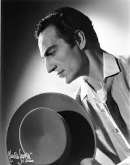
Monday, July 2, 1962
June 17 thru June 19, 1966
Greco was born on December 23, 1918 in Montorio nei Frentani, Molise, Italy as Constanzo José Greco. The legendary flamenco dancer and choreographer was born to Spanish-Italian parents, and moved to New York at the age of nine. As a teenager he made his debut at the Hippodrome. From 1942, he studied Latin dance under La Argentinita and Pilar Lopez. In 1947 he founded his own dance troupe, touring the U.S. in 1951 with Flamenco specialist La Quica. He appeared on Broadway, in movies, TV, and radio shows.
He is known for his work on Around the World in 80 Days (1956), Sombrero (1953) and Ship of Fools (1965). He was married to Ana Borger-Greco. He established the José Greco Foundation for Hispanic Dance in New York.
On 18 Sept. 2000 in Trenton, New Jersey, USA, Greco's toe was broken in an altercation with Amtrak railway police. The injury required surgery. The Greco family maintained that that led to a subsequent infection and ultimately Greco's death. He died on December 31, 2000 in Lancaster, PA.
He was awarded the Cross of the Knight of Civil Merit in 1982 by the government of Spain.
Timothy Leary (Psychologist, LSD Guru)
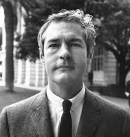
One of the stranger claims to fame of the Department of Psychology at Harvard is that it was once home to two of the leading figures in the 1960s counterculture and culture of psychedelic drugs. In 1960, two promising young psychologists at Harvard, Timothy Leary and Richard Alpert, began to explore the effects of psychotropic substances on the human mind.
Shortly after Leary's arrival at Harvard, he and Alpert started the Harvard Psilocybin Project. Psilocybin is an entheogenic hallucinogen which naturally occurs in certain species of mushrooms; Leary and Alpert sought to document its effects on human consciousness by administering it to volunteer subjects and recording their real-time descriptions of the experience. At the time of Leary and Alpert's research at Harvard, neither LSD nor psilocybin were illegal substances in the United States.
By 1962 various faculty members and administrators at Harvard were concerned about the safety of Leary and Alpert's research subjects, and critiqued the rigor of their unorthodox methodology (in particular, the researchers conducted their investigations when they, too, were under the influence of psilocybin). Editorials printed in the Harvard Crimson accused Alpert and Leary of not merely researching psychotropic drugs but actively promoting their recreational use.
Discredited by their lack of scientific rigor and failure to observe established research guidelines, Timothy Leary and Richard Alpert were both banished from academia, but that was far from the end of their public lives: both men went on to become icons of the psychedelic drug, counterculture, and human potential movement. Leary became famous for the slogan "Tune in, Turn On, Drop Out": Alpert, under the name Baba Ram Dass, wrote a popular book called Be Here Now, described as a "modern spiritual classic."
Carlos Montoya (Guitarist, Composer)
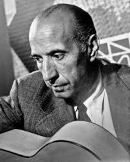
Carlos Montoya transformed flamenco guitar in the 1950s and 1960s, showing that it deserved consideration as an art form outside of its traditional context as background music for dancers with casta-nets. Montoya was born in Madrid, Spain, on December 13, 1903. His mother, Emilia Montoya, was an amateur guitarist, and began teaching her son when he was eight. While Montoya continued to learn from other players, he remained basically self-taught, and although he would one day compose flamenco music for orchestras, he never learned to read music.
Montoya's gypsy heritage also played an important role in his choice to become a musician. Gypsies had immigrated to Spain from India in the fifteenth century and were forced to settle in the Andalusian province. There, the Gypsies absorbed the folk cultures of the Arabs, Christians, Jews, and Spanish. Flamenco featured guitarists who improvised variations on a small number of chords as dancers tapped their toes and clicked castanets. Many maintained—as did Montoya—that only Gypsies could play flamenco with real heart. Montoya inherited this culture and was what the Spanish call "gitano per los cuatro costados," which meant he was Gypsy on all four sides of his family.